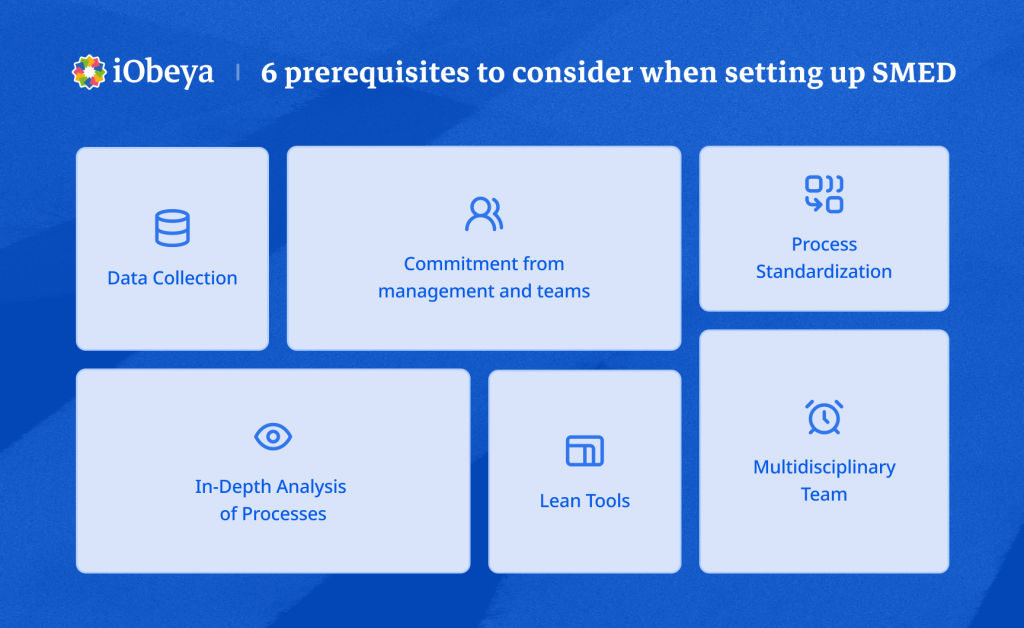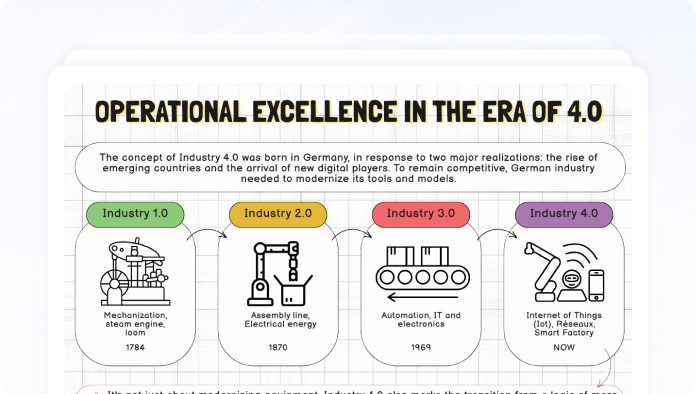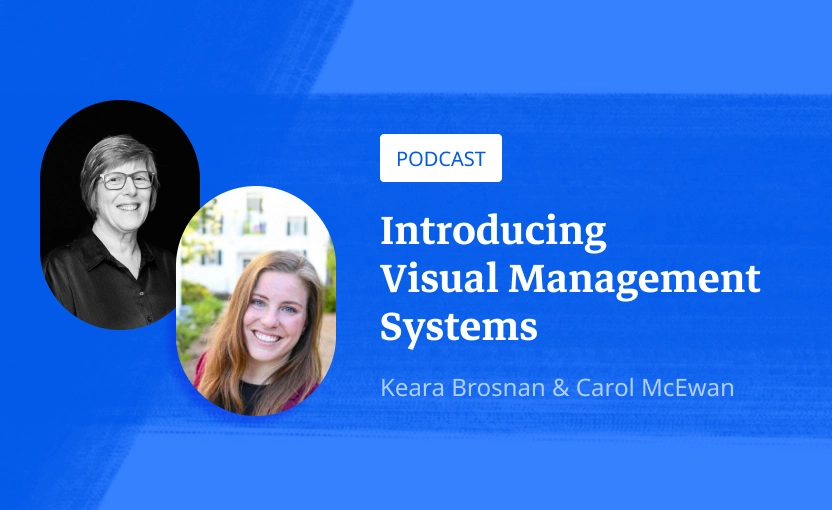Hey, let’s start your
iObeya journey!
Lean is often seen as a matter of common sense. And yet, its principles and practice sometimes challenge deeply held beliefs among industrial production stakeholders. (especially the idea of series changes)
The classic industrial approach in manufacturing production focuses on reducing unit costs through large production campaigns and sizable batch sizes. To do this, it seeks to particularly minimize the frequency of changes by investing in specialized production lines and promoting mass production.
Lean thinking, with its lean and customer-centric production perspective, encourages the adjustment of production to actual demand. This involves reducing the size of series and perfect control of changes on production lines, in order to better meet market needs and optimize operational efficiency.
In Lean companies, series changes are no longer considered a “bad thing”, but as an opportunity to reduce batch sizes, integrate quality controls and minimize waste.
To ensure optimal operational efficiency, it is crucial to control the duration of these changes. This is where the SMED (Single-Minute Exchange of Die) approach comes in.
Some questions you may have at this point are:
- What is SMED? / Why is changeover optimization necessary?
- Why is SMED particularly relevant today?
- What are the prerequisites for its implementation?
- How to get started with SMED?
This article aims to answer these questions and share the importance of SMED.
What is SMED: Transforming Constraints Into Opportunities
SMED emerged in response to specific constraints Toyota faced, including strong competition in the domestic market and budgetary restrictions. To overcome these challenges, management decided that the company should focus on improving quality, while diversifying its product offering and reducing costs.
In this context, Toyota reversed the logic commonly accepted by manufacturers: to achieve its objectives, the company had to reduce series size and increase the flexibility of production lines.
The costly investment in specialized production lines and mass production aimed at maximizing the use of operators and machines proved not only too costly for Toyota, but also perceived as a source of inefficiency and waste (muda).
The mass production method can lead to delays in defect detection, while Toyota seeks to integrate quality control directly into production operations. Forecasting errors on sales cycles can cause bottlenecks, leading to an accumulation of unnecessary inventory, one of the main wastes according to Lean thinking.
Toyota, particularly its Japanese engineer Shigeo Shingo, aware of the costs generated by changes on production lines, have developed SMED (Single-Minute Exchange of Die, which can be translated as “Exchange of Tools in Minimum Time”) to meet these requirements for flexibility of production lines at a lower cost.
The idea is to carefully analyze change operations to optimize them. To do this, a distinction is made between change activities that can be carried out when the equipment is running (external tasks) and those requiring the machine to be stopped (internal tasks). By optimizing these processes, similar to how F1 mechanics change tires in seconds during pit stops, SMED enables faster transitions between sets, supporting the goals of Lean production.
The Strategic Advantages of SMED in Production optimization
Integrating quality control into production operations while adjusting the production rate as closely as possible to sales to limit inventories, all at a lower cost, cannot be improvised. Lean tools and methodologies such as Jidoka, continuous flow production, Kanban, Takt Time, and others are essential to meet these challenges. However, their effectiveness decreases if the company does not anticipate and work on the flexibility of its production lines.
Historically, SMED has not only been an important aspect of Lean manufacturing over the past several decades that has led to reduced waste, but it also has allowed companies to optimize their production processes , decrease costs, and most importantly improve their ability to respond to market demands.
Here are seven additional reasons why SMED has been and still is significant today:
Quick Changeovers Leads to Increased Production Flexibility
SMED decreases changeover time, allowing manufacturers to shift between products or processes quickly. This flexibility is vital in meeting changing customer demands and reducing lead times.
Just-in-Time Production Results in Reduced Inventory Levels
With quicker changeovers, manufacturers can create smaller batches of products more frequently, minimizing the need for large inventories. This will decrease storage costs and the risk of inventory obsolescence.
Less Downtime Equates to Enhanced Productivity
By minimizing the time equipment is idle during changeovers, SMED increases overall equipment effectiveness (OEE). This leads to higher production rates and better utilization of resources.
Lower Operational Costs Produces Expense Savings
Reducing changeover times decreases labor costs and energy consumption. Waste is also minimized as typically less material is lost or discarded during the setup process.
Consistent Output Breeds Improved Quality
More efficient and effective changeovers can lead to more consistent production processes, decreasing the likelihood of defects thereby improving overall product quality.
Market Responsiveness Increases Competitiveness
Quicker change times allows companies to respond more rapidly to market changes and customer preferences, providing a competitive advantage.
Empowerment Generates Greater Employee Engagement
Implementing SMED often involves involving employees in identifying and eliminating inefficiencies. This can lead to increased skill development as well as job satisfaction.
The benefits of SMED are quite comprehensive and many manufacturers can realize the advantages of implementing this approach.
Some prerequisites for setting up a SMED

Setting up a SMED (Single-Minute Exchange of Die) requires a methodical approach and taking into account certain prerequisites to ensure the success of the process. Here are six of the common prerequisites to consider when setting up SMED:
1. Commitment from management and teams:
It is crucial to obtain the support and commitment of the company’s management. It must be prepared to invest resources and support the necessary changes. In the same way, teams must be trained and made aware of the principles of SMED.
2. Data Collection:
Before starting the improvement process, it is important to collect data on current changeover times, operations involved and reasons for delays. This will help identify specific areas that need improvement. de aware of the principles of SMED.
3. Process Standardization:
It is useful to have standardized processes before starting to improve them. This makes it easier to identify opportunities for improvement and helps measure progress after SMED implementation.
4. Multidisciplinary Team:
The formation of a multidisciplinary team is recommended. It should include members from different departments involved in the change process, such as production, maintenance, quality, etc.
5. In-depth Analysis of Processes:
Before making improvements, it is necessary to carry out an in-depth analysis of the change processes. This involves understanding each step of the process, distinguishing between internal and external activities, and identifying opportunities to reduce time. Utilization of current state and future state process maps can be instrumental in helping perform such an analysis.
6. Lean Tools:
The implementation of SMED is often part of Lean Manufacturing principles. Knowledge and use of Lean tools such as 5S, spaghetti diagram, kaizen, etc., can facilitate the improvement process.
Once the SMED is being implemented, regularly update team members on progress. This constant feedback will help you adjust processes and ensure continuous improvement.
Leveraging Visual Management to Launch and Improve SMED
Visual management, including digital visual management, can be an asset towards implementing and/or improving SMED in your facility with the goal of enhancing efficiency and productivity in manufacturing processes.
Here are just five of the key advantages of utilizing visual management for SMED initiatives:
1. Simplification and Standardization
Aiming to standardize and simplify the changeover process to minimize downtime, visual management tools help to clearly display the steps, tools, and components needed for a quick and efficient changeover.
2. Enhanced Planning and Preparation
Using process maps, kanban boards and other visual management tools helps to ensure that all team members involved in the changeover process are on the same page, aware of their responsibilities and streamlines communication.
3. Error Reduction
Utilizing visual aids such as diagrams and checklists, SMED helps operators follow the correct procedures, reduce errors and ensure consistent changeover times.
4. Monitoring and Improvement
Enabling real-time monitoring allows immediate identification and resolution of issues during the changeover process. Visual management tools can display key metrics and track progress, facilitate quicker adjustments, and highlight areas where further improvements can be made.
5. Training and Empowerment
Providing clear, visual instructions that are easy to follow, empowers employees by giving them the information they need to perform their tasks efficiently. Such Visual aids can accelerate training and ensure that everyone understands the new processes.
Integrating visual management principles into the SMED process allows manufacturers to achieve more efficient, error-free and standardized changeovers, leading to improved overall productivity and effectiveness.







